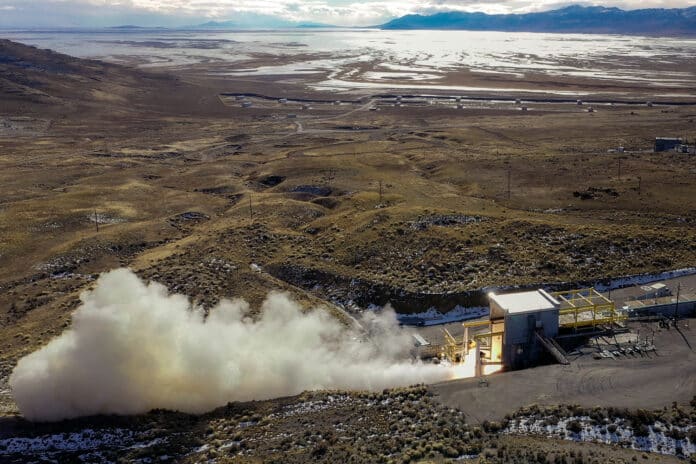Aerospace and defense technology company Northrop Grumman has announced the successful full-scale static test fire of a new solid rocket motor that was developed in less than a year as part of its Solid Motor Annual Rocket Technology Demonstrator (SMART Demo).
The SMART Demo showcased several cutting-edge technologies, alternative manufacturing materials, and processes to reduce lead times by 75%. These include several advanced, long-lead tooling products as well as components of the solid rocket motor’s nozzle structure, constructed with additive manufacturing techniques.
It also successfully demonstrated a new, cost-effective solid rocket motor propellant capable of operating at cold temperatures. And, Northrop Grumman utilized the test to qualify materials in the nozzle from alternative suppliers, a move that could supplement or replace other long-lead materials experiencing challenged supply chains.
“We are designing and building the world’s largest and most advanced solid rocket motors, and we’re proving we can do so with shorter lead times, an expanded supply chain, and increased agility for our customers,” said Wendy Williams, vice president, propulsion systems, Northrop Grumman.
Northrop Grumman’s SMART Demo shows the effective implementation of new solid rocket motor technologies, materials, and processes. The main objective of this initiative is to reduce the development time and costs while improving motor performance.
As part of this effort, Northrop Grumman has designed, developed, built, and tested a new solid rocket motor and associated tooling.
The company is planning to conduct a SMART Demo annually as it seeks to invest and advance in solid rocket motor development and propulsion. SMART Demo is expected to expand and strengthen Northrop Grumman’s supplier base by streamlining the testing and qualification of new materials, processes, and alternate suppliers who manufacture critical materials using faster and more efficient processes.
Northrop Grumman is really ramping up their motor production capabilities. With plans to develop five new motors simultaneously and expects to produce more motors by 2030, it is constructing 11 new buildings and modifying 16 more to support new and existing programs.
